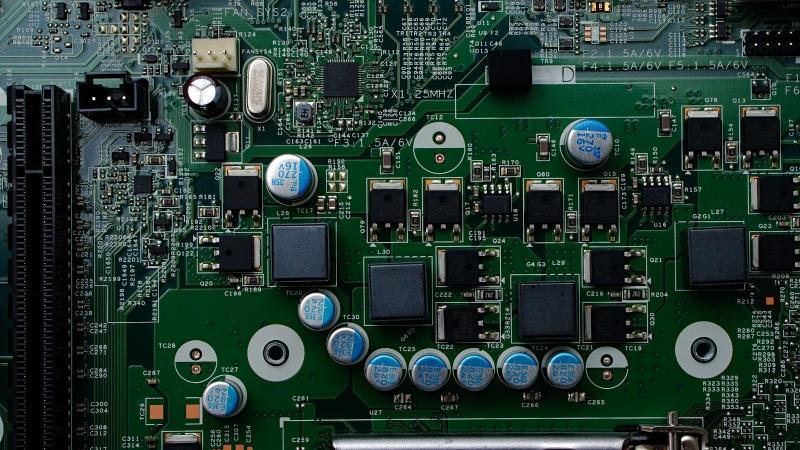
[Image by Michael Dziedzic on Unsplash]
Modern computers carry out computations — also called ‘logical operations’ — on massive amounts of data that are stored in specialised memory devices. The computing blocks need to exchange significant amounts of data with Random Access Memory, or RAM, a type of temporary memory. Over the years, various applications that search and process the appropriate data from memory devices have increasingly demanded faster computations.
One approach to this challenge is to speed up the communication of data between the blocks of memory and computation. Another, a more novel, approach is to devise memory chips that not only store data, but also carry out logical operations. This would save the time spent in searching and transferring data between the two blocks. Now, researchers from the Indian Institute of Technology Bombay (IIT Bombay) have invented a new technique to carry out logical operations inside RAMs and, for the first time, have successfully designed a device that works as both computing and memory blocks.
The studies were supported by the Department of Science and Technology (DST), Ministry of Electronics and IT (MeitY) and Department of Electronics, Government of India, and the Semiconductor Research Corporation (SRC), an international industry consortium with members such as Intel and Texas Instruments. They were published in the journals IEEE Electron Device Letters and ACS Applied Electronic Materials.
Computers use tiny devices called transistors to carry out logical operations. Even though transistors can regulate the current flow, once they are no longer operational, they do not retain any information about how they controlled the current in the past. Hence, they cannot be used as memory devices.
Resistive RAMs, or RRAMs, are two-terminal nanodevices consisting of one input and one output terminal. Scientists have earlier used two RRAMs in specific combinations and succeeded in implementing a logical operation. They could execute a sequence of operations like varying the input voltage, and regulate the current flow. They could also recall the results of a series of operations carried out earlier by measuring the resistance of the two output terminals. The combination thus acted as a memory device as well.
But, the researchers need to carry out several intervening steps to implement such a combination as both a transistor and a memory device. This slows down the computation and also reduces the lifetime of the components with each step. It also decreases the amount of actual data storage available in the RRAMs.
To get over the limitations, various scientists have aspired to develop a three-terminal RRAM. Unlike in the case of two-terminal RRAMs, the third terminal gets rid of combining RRAMs in several steps. This makes it possible to carry out the logical operations and implement the transistor-cum-memory function in one iteration of input and output. Therefore, it saves power and increases the total amount of memory available to the RRAM. However, efforts thus far had been unsuccessful.
Now, the researchers from IIT Bombay have realised the third terminal by coating a layer of metal oxide on the two-terminal RRAMs.
“We sneaked in a nanoscale third terminal on the side of the oxide layer, but the challenge was to insert it just enough to enable control and sensing of the two terminal RRAM without disrupting its behavior completely,” says Prof Udayan Ganguly, a co-author of the study.
By experimentally studying the current–voltage relationship of the three-terminal RRAM, and its dependence on its surface area, the researchers found that the resistance was not limited only to the surface but spread throughout its volume. Thus, they showed that the third terminal indeed senses the current flowing through the device.
“This extended resistance change control across the bulk of the device as opposed to the interface is very attractive. It reduces random variation and makes the device more stable — a promising feature,” says Prof Ganguly.
By using the three-terminal RRAMs in various combinations, the researchers could implement some universal logical operations that make up the building blocks of a logic circuit. Thus, the three-terminal RRAMs can be used as computing devices, in addition to acting as memory devices.
“What we have demonstrated is one of the many steps necessary for large-scale manufacturing of realistic computable memory devices,” shares Prof Ganguly.
Semiconductor Research Corporation, a consortium of electronic companies like Intel and Texas Instruments, continues to fund the project, and work is in full-swing to chalk out the next steps. “We are investigating to find how the three-terminal RRAM can improve the performance of future microprocessors used for artificial intelligence,” he signs off.
This article has been run past the researchers, whose work is covered, to ensure accuracy.






